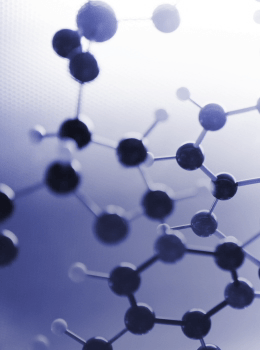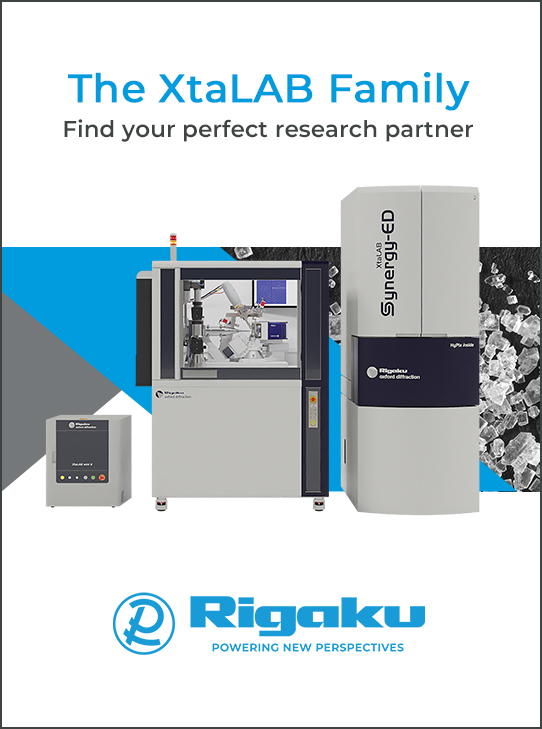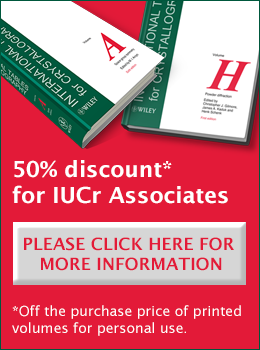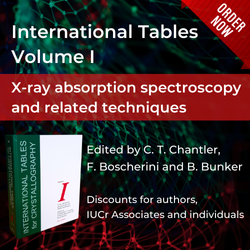
Meeting report (IUCr supported)
First Senegalese Day of Crystallography
![Thumbnail [Thumbnail]](https://www.iucr.org/__data/assets/image/0011/158987/thumbnail.png)
1. Introduction
The aim of this article is to report on the first Senegalese Day of Crystallography organized by the Senegalese Crystallographic Association (ASC, Association Sénégalaise de Cristallographie).
2. Context
The First Senegalese Day of Crystallography (Cristal Ô) organized by the ASC took place on 19 February 2024 at Cheikh Anta DIOP Dakar University in the conference room of the International Center for Research and Training in Applied Genomics and Health Surveillance (CIGASS).
The aim of the event was first and foremost to launch the activities of the ASC and to enable young Senegalese researchers, teacher–researchers and engineers working in the fields of crystallography, material sciences, chemistry and biology to get to know each other through the presentation of the different activities of their home laboratories, and to encourage interactive exchanges between specialists and novices in crystallography. Particular attention was paid to the new CNRS/CRM2 AFRAMED project (Doctoral Training and Research in Africa through remote X-ray diffraction measurements), a remote laboratory led by Professor Claude Lecomte. Launched on 31 August 2022, this project enables scientists from African laboratories to remotely control the CRM2 single-crystal X-ray diffractometer located at CRM2, Université de Lorraine, Nancy, France. This conference day was attended by 81 participants from five Senegalese public universities: Assane Seck University of Ziguinchor (UASZ), Alioune DIOP University of Bambey (UADB), Gaston Berger University of Saint-Louis (UGB), Amadou Mahtar Mbow University of Diamniadio (UAM), Iba Der THIAM University of Thies (UIT) and, of course, Cheikh Anta DIOP University of Dakar (UCAD).
3. The 2024 edition
Course of activities
The scientific day began under the auspices of the university authorities. The opening ceremony was presided over by Professor Bassirou Lô, Dean of the Faculty of Science and Technology at UCAD, representing the Rector, in the presence of the Head of the Chemistry Department, Professor Momar Ndiaye, the Director of Pedagogical Affairs (DAP) and many other leading figures from the Senegalese scientific world.
The event began with an official welcome address by Professor Ibrahima Elhadji Thiam, Chair of the day's organizing committee (UCAD), followed by words from Professor Magatte Camara, ASC President (UASZ); Professor Emeritus Claude Lecomte; Professor Momar Ndiaye; and Professor Bassirou Lô.
![[Fig. 1]](https://www.iucr.org/__data/assets/image/0017/159020/Fig.-1.jpg)
Immediately after the opening ceremony, we moved onto the inaugural lecture by Professor Lecomte entitled "Crystallography in Sub-Saharan Africa: Contribution of AFRAMED to the CNRS-IUCr-UNESCO Africa Initiative”.
Why this conference? To understand the importance of developing crystallography and structural sciences in Sub-Saharan Africa. By answering the question: What is crystallography? Prof Lecomte showed that it is an essential science at the crossroads of disciplines such as mineralogy, geology, physics, chemistry, materials and life sciences.
The AFRAMED project was prompted by the emergence of COVID-19, with its widespread travel constraints. In 2022, the CNRS decided to give priority to collaborations with Africa and created the AFRAMED IRN (International Research Network) proposed by Professor Lecomte. AFRAMED is a five-year CNRS project: during one month, three or four young African colleagues are trained intensively to 'drive' single-crystal diffractometers by CRM2 researchers (Dr Emmanuel Wenger, Dr El-Eulmi Bendeif and Professor Lecomte). Then, back in their home country, these colleagues can collect diffraction data on the CRM2 diffractometers in remote mode for teaching and research. Since September 2022, Egypt, Togo, Cameroon and Gabon, Senegal, Congo Brazzaville, Ivory Coast and Algeria have been involved; in 2024, Madagascar, Burkina Faso and Mauritania will be the hosts of CRM2. The trainees are fully funded by the CNRS IRN and the IUCr within its Crystallography in Africa initiative. UNESCO will join in 2024.
During the conference day, a remote session on single-crystal X-ray diffraction was led by Dr Wenger. Emmanuel centered a paracetamol single crystal on the diffractometer and taught all steps of XRD data collection. We noted great enthusiasm from the participants.
![[Fig. 2]](https://www.iucr.org/__data/assets/image/0018/159021/Fig.-2.jpg)
Researchers from eight research teams and laboratories in Senegal reviewed their research work in oral presentations, giving a brief overview of the research team, highlighting the use of the diffractometer – an iconic instrument in crystallography –, the contribution of crystallography to their field of research and their prospects.
Laboratory of Chemistry and Physics of Materials, LCPM (UASZ)
![[Fig. 3]](https://www.iucr.org/__data/assets/image/0019/159022/Fig.-3.jpg) The Materials Chemistry and Physics Laboratory (LCPM) was established in 2010 and recognized by a Rector's decree in 2017. It is attached to the Sciences and Technologies UFR and Science, Technology and Engineering (STI) Doctoral School. Its current Director is Professor Magatte Camara, assisted by Professor Lat Grand Ndiaye. The LCPM has published over 300 publications and patents, and collaborates with 22 partner laboratories worldwide. Its research themes involve rare-earth-based inorganic materials, microporous and nanoporous materials, switchable materials, crystallography, materials engineering (ceramics, single crystals, thin films, nanostructures, waste recovery, biomass, biogas etc.), the chemistry of natural substances (extraction, isolation, characterization, fine chemical recovery) and synthesis methods for innovative molecules and molecular materials.
The Materials Chemistry and Physics Laboratory (LCPM) was established in 2010 and recognized by a Rector's decree in 2017. It is attached to the Sciences and Technologies UFR and Science, Technology and Engineering (STI) Doctoral School. Its current Director is Professor Magatte Camara, assisted by Professor Lat Grand Ndiaye. The LCPM has published over 300 publications and patents, and collaborates with 22 partner laboratories worldwide. Its research themes involve rare-earth-based inorganic materials, microporous and nanoporous materials, switchable materials, crystallography, materials engineering (ceramics, single crystals, thin films, nanostructures, waste recovery, biomass, biogas etc.), the chemistry of natural substances (extraction, isolation, characterization, fine chemical recovery) and synthesis methods for innovative molecules and molecular materials.
Organic Coordination Chemistry Laboratory, LCCOB (UCAD)
![[Fig. 4]](https://www.iucr.org/__data/assets/image/0020/159023/Fig.-4.jpg) The Laboratoire de Chimie de Coordination Organique et des Biomolécules (LCCOB) was set up in 1998 by Professor Abdou Salam Sall and Professor Mohamed Lamine Gaye. It belongs to the Faculty of Science and Technology and the PCSTUI (Physics, Chemistry, Earth, Universe and Engineering Sciences) Doctoral School. Its current Director is Professor Ousmane Diouf, and it collaborates with several national faculties and institutes and with various public universities in Senegal. Collaborations with international laboratories include the universities of Marseille, Toulouse, Nancy, Grenoble, Paris, Tunis, Nouakchott, Conakry, Algiers, Lyon, San Carlos (Brazil) and Southampton (UK). Over 200 articles have been published in international journals. Its field of research is the synthesis of homonuclear and heteronuclear coordination complexes, and transition metal and lanthanide co-crystals from Schiff bases. The physico-chemical and biological properties of the molecules are studied.
The Laboratoire de Chimie de Coordination Organique et des Biomolécules (LCCOB) was set up in 1998 by Professor Abdou Salam Sall and Professor Mohamed Lamine Gaye. It belongs to the Faculty of Science and Technology and the PCSTUI (Physics, Chemistry, Earth, Universe and Engineering Sciences) Doctoral School. Its current Director is Professor Ousmane Diouf, and it collaborates with several national faculties and institutes and with various public universities in Senegal. Collaborations with international laboratories include the universities of Marseille, Toulouse, Nancy, Grenoble, Paris, Tunis, Nouakchott, Conakry, Algiers, Lyon, San Carlos (Brazil) and Southampton (UK). Over 200 articles have been published in international journals. Its field of research is the synthesis of homonuclear and heteronuclear coordination complexes, and transition metal and lanthanide co-crystals from Schiff bases. The physico-chemical and biological properties of the molecules are studied.
Physical, Mineral, Organic and Therapeutic Chemistry Laboratory, LCPMOT (UCAD)
![[Fig. 5]](https://www.iucr.org/__data/assets/image/0003/159024/Fig.-5.jpg) The Organic and Therapeutic Chemistry Laboratory, more than 50 years old, recently renamed the Physical, Mineral, Organic and Therapeutic Chemistry Laboratory (LCPMOT) according to the subjects taught, is housed within the Department of Pharmaceutical, Physical and Chemical Sciences of the Faculty of Medicine, Pharmacy and Odontology (FMPO) of UCAD. The main line of research focuses on the synthesis of ligands and transition metal coordination complexes with biological activity. Most complexes have antioxidant activities (evaluated with the DPPH radical) greater than those of the ligands, and the diazenes obtained present antimicrobial and anticancer activities on several tumor lines.
The Organic and Therapeutic Chemistry Laboratory, more than 50 years old, recently renamed the Physical, Mineral, Organic and Therapeutic Chemistry Laboratory (LCPMOT) according to the subjects taught, is housed within the Department of Pharmaceutical, Physical and Chemical Sciences of the Faculty of Medicine, Pharmacy and Odontology (FMPO) of UCAD. The main line of research focuses on the synthesis of ligands and transition metal coordination complexes with biological activity. Most complexes have antioxidant activities (evaluated with the DPPH radical) greater than those of the ligands, and the diazenes obtained present antimicrobial and anticancer activities on several tumor lines.
Inorganic and Analytical Chemistry Laboratory, LACHIMIA (UCAD)
![[Fig. 6]](https://www.iucr.org/__data/assets/image/0004/159025/Fig.-6.jpg) Founded in 1978 by Professor Libasse Diop and currently headed by Professor Mamadou Sidibé, the Inorganic and Analytical Chemistry Laboratory (LACHIMIA) uses crystallography as one of its main methods for characterizing molecular structure and materials in general. LACHIMIA is involved in three major areas of research, namely coordination chemistry, mining environment and water chemistry. In the field of coordination chemistry, LACHIMIA favors single-crystal X-ray diffraction analysis to elucidate the structure of their materials. For the study of mining environments, particularly mine tailings and clay materials, X-ray powder diffraction is used to characterize their mineralogy and analyse their crystalline phases. LACHIMIA has characterized over 200 crystal structures of coordination compounds, resulting in more than 100 publications in international journals. Recently, the laboratory has also undertaken X-ray diffraction characterization of mine tailings from SABODALA and clays from various regions of Senegal, in collaboration with the SANTARGILE Company.
Founded in 1978 by Professor Libasse Diop and currently headed by Professor Mamadou Sidibé, the Inorganic and Analytical Chemistry Laboratory (LACHIMIA) uses crystallography as one of its main methods for characterizing molecular structure and materials in general. LACHIMIA is involved in three major areas of research, namely coordination chemistry, mining environment and water chemistry. In the field of coordination chemistry, LACHIMIA favors single-crystal X-ray diffraction analysis to elucidate the structure of their materials. For the study of mining environments, particularly mine tailings and clay materials, X-ray powder diffraction is used to characterize their mineralogy and analyse their crystalline phases. LACHIMIA has characterized over 200 crystal structures of coordination compounds, resulting in more than 100 publications in international journals. Recently, the laboratory has also undertaken X-ray diffraction characterization of mine tailings from SABODALA and clays from various regions of Senegal, in collaboration with the SANTARGILE Company.
Quantum Energy Photonics and Nanofabrication Laboratory, LPQEN (UCAD)
![[Fig. 7]](https://www.iucr.org/__data/assets/image/0005/159026/Fig.-7.jpg) The Quantum Energy Photonics and Nanofabrication Laboratory (LPQEN) is headed by Professor Balla Diop Ngom. LPQEN is a laboratory working on the synthesis and characterization of nanomaterials such as activated carbon, two-dimensional materials (graphene, MXene), metal oxides, metal oxi-nitrides, composites and nanocelluloses. The materials are characterized using various techniques to study their physico-chemical properties. These nanomaterials are used in supercapacitor electrodes. The experimental facilities of the laboratory are electric and chemical vapor deposition (CVD) furnaces, a 16-channel VMP300 Static Potentiometer, an 8-channel battery analyzer, an autoclave with a heating jacket and a pressure-controlled button cell crimping machine.
The Quantum Energy Photonics and Nanofabrication Laboratory (LPQEN) is headed by Professor Balla Diop Ngom. LPQEN is a laboratory working on the synthesis and characterization of nanomaterials such as activated carbon, two-dimensional materials (graphene, MXene), metal oxides, metal oxi-nitrides, composites and nanocelluloses. The materials are characterized using various techniques to study their physico-chemical properties. These nanomaterials are used in supercapacitor electrodes. The experimental facilities of the laboratory are electric and chemical vapor deposition (CVD) furnaces, a 16-channel VMP300 Static Potentiometer, an 8-channel battery analyzer, an autoclave with a heating jacket and a pressure-controlled button cell crimping machine.
Chemistry of Inorganic and Organic Materials team, ECMIO (UADB)
![[Fig. 8]](https://www.iucr.org/__data/assets/image/0006/159027/Fig.-8.jpg) The ECMIO research team, headed by Professor Farba Bouyagui Tamboura, is attached to the Physics-Chemistry doctoral program of Applied Sciences and Computer and Communication Technology UFR, Department of Chemistry of UADB. It has to its credit 57 publications in indexed and abstracted journals, and 17 oral presentations and 11 poster presentations at various conferences and seminars. Partner universities and institutes are UCAD; UASZ; the universities of Nouakchott (Mauritania), Strasbourg (France) and El Manar Tunis (Tunisia); and the Jean Rouxel Materials Institute (Nantes, France). Work focuses on organic and inorganic synthesis; complexation, magnetic, conductimetric, antifungal and antibacterial studies; and X-ray diffraction.
The ECMIO research team, headed by Professor Farba Bouyagui Tamboura, is attached to the Physics-Chemistry doctoral program of Applied Sciences and Computer and Communication Technology UFR, Department of Chemistry of UADB. It has to its credit 57 publications in indexed and abstracted journals, and 17 oral presentations and 11 poster presentations at various conferences and seminars. Partner universities and institutes are UCAD; UASZ; the universities of Nouakchott (Mauritania), Strasbourg (France) and El Manar Tunis (Tunisia); and the Jean Rouxel Materials Institute (Nantes, France). Work focuses on organic and inorganic synthesis; complexation, magnetic, conductimetric, antifungal and antibacterial studies; and X-ray diffraction.
Environment - Engineering - Telecommunications and Renewable Energies Laboratory, LEITER (UGB)
![[Fig. 9]](https://www.iucr.org/__data/assets/image/0007/159028/Fig.-9.jpg) LEITER is a laboratory that tackles issues linked to the production of scientific knowledge on renewable energies, energy efficiency and water and environmental engineering, from materials and their transformation to technological and engineering innovations to achieve greater energy efficiency in their use. The Laboratory promotes multidisciplinary research activities with a potential impact on the sustainable development of Senegal and Africa. LEITER comprises three multidisciplinary teams: Electronics-Electrotechnics-Automatics and Computing; Renewable Energies and Materials; and Water, Environment and Climate. Professor Amadou Seidou H. Maiga is the Director and he is assisted by Professor Elhadji Babacar Ly, who is a lecturer and researcher in materials chemistry at UGB. He conducts research into materials and their transformation for various applications such as construction materials, biocomposites, conductive polymers, paper and plastic packaging, membranes for water treatment, biogas and biofuel. He uses crystallography and diffractometers to identify chemical species and phases in materials, to design the best combinations of materials for a given application, and to interpret the results of his research.
LEITER is a laboratory that tackles issues linked to the production of scientific knowledge on renewable energies, energy efficiency and water and environmental engineering, from materials and their transformation to technological and engineering innovations to achieve greater energy efficiency in their use. The Laboratory promotes multidisciplinary research activities with a potential impact on the sustainable development of Senegal and Africa. LEITER comprises three multidisciplinary teams: Electronics-Electrotechnics-Automatics and Computing; Renewable Energies and Materials; and Water, Environment and Climate. Professor Amadou Seidou H. Maiga is the Director and he is assisted by Professor Elhadji Babacar Ly, who is a lecturer and researcher in materials chemistry at UGB. He conducts research into materials and their transformation for various applications such as construction materials, biocomposites, conductive polymers, paper and plastic packaging, membranes for water treatment, biogas and biofuel. He uses crystallography and diffractometers to identify chemical species and phases in materials, to design the best combinations of materials for a given application, and to interpret the results of his research.
X-ray Utilization Laboratory, LUX (FST-UCAD)
![[Fig. 10]](https://www.iucr.org/__data/assets/image/0008/159029/Fig.-10.jpg) The LUX laboratory research team is currently headed by Dr Abdou Ciss Wade. LUX was set up in the Physics Department in 2000 by Professor Djibril Diop, with the help of the X-ray physics group at the University of Trento in Italy. In 2005, the lab was equipped with a Philips PW 1840 diffractometer, with Bragg–Brentano geometry θ–2θ, and in recent years has turned its attention to the study of local materials such as binders made from sewage sludge ash and lime, clays, eggshell powder etc. The objectives revolve around the design of materials by promoting interactions between technologies on the one hand, and physics and chemistry on the other; the development of composite materials with specific properties; understanding the electronic, structural and thermal behavior of fullerenes and fullerites; and determining the mechanical, physical, thermal and chemical properties of local materials (soils, ashes, clays, eggshells etc.). The laboratory collaborates with the Ecole Supérieure, UIT, University of Trento and Synchrotron Elettra (Trieste, Italy) and Université Gustave Eiffel (Paris, France). The laboratory has organized three international X-ray workshops, which took place in December 2005, January 2009 and January 2012.
The LUX laboratory research team is currently headed by Dr Abdou Ciss Wade. LUX was set up in the Physics Department in 2000 by Professor Djibril Diop, with the help of the X-ray physics group at the University of Trento in Italy. In 2005, the lab was equipped with a Philips PW 1840 diffractometer, with Bragg–Brentano geometry θ–2θ, and in recent years has turned its attention to the study of local materials such as binders made from sewage sludge ash and lime, clays, eggshell powder etc. The objectives revolve around the design of materials by promoting interactions between technologies on the one hand, and physics and chemistry on the other; the development of composite materials with specific properties; understanding the electronic, structural and thermal behavior of fullerenes and fullerites; and determining the mechanical, physical, thermal and chemical properties of local materials (soils, ashes, clays, eggshells etc.). The laboratory collaborates with the Ecole Supérieure, UIT, University of Trento and Synchrotron Elettra (Trieste, Italy) and Université Gustave Eiffel (Paris, France). The laboratory has organized three international X-ray workshops, which took place in December 2005, January 2009 and January 2012.
Magatte Camara, Ibrahima Elhadji Thiam, Rokhaya Sylla Gueye, Mbossé Ndiaye Gueye, Adama Sy and Farba Bouyagui Tamboura are members of the ASC Executive Committee. Emmanuel Wenger and Claude Lecomte are at CRM2 - Cristallographie, Résonance Magnétique et Modélisations, Nancy, France.
Copyright © - All Rights Reserved - International Union of Crystallography








